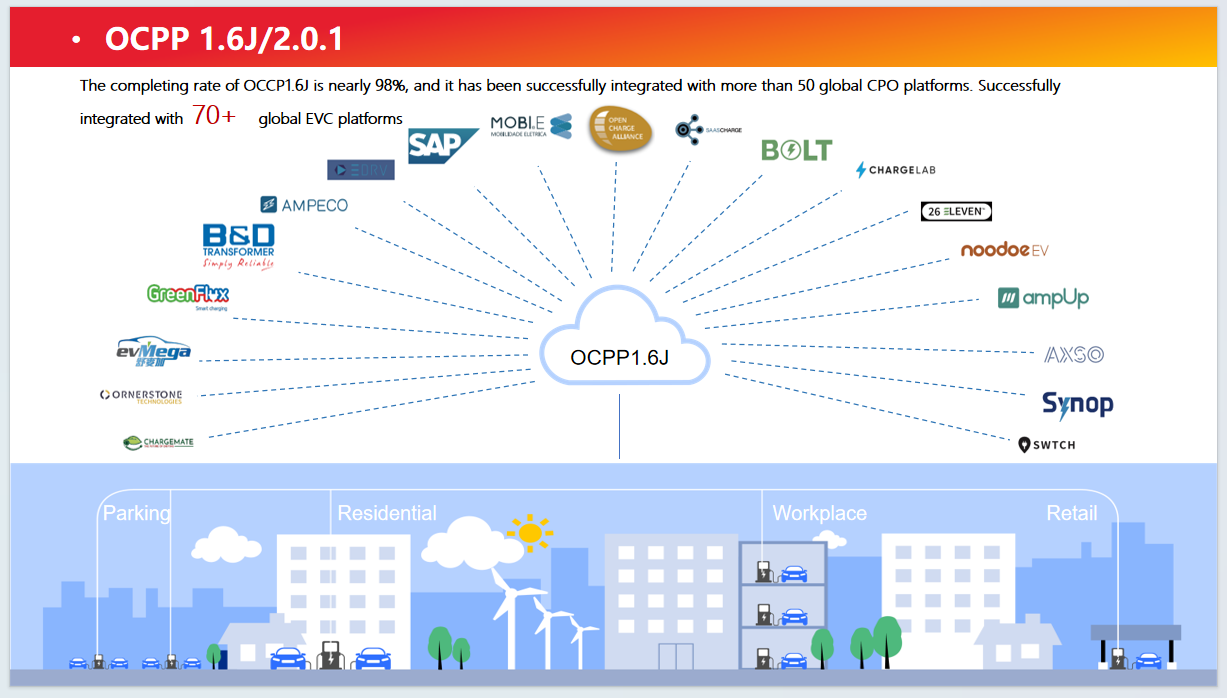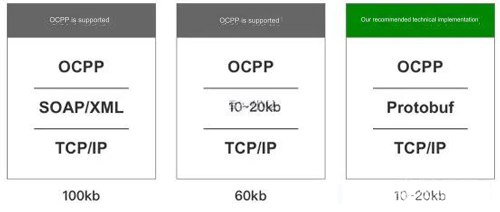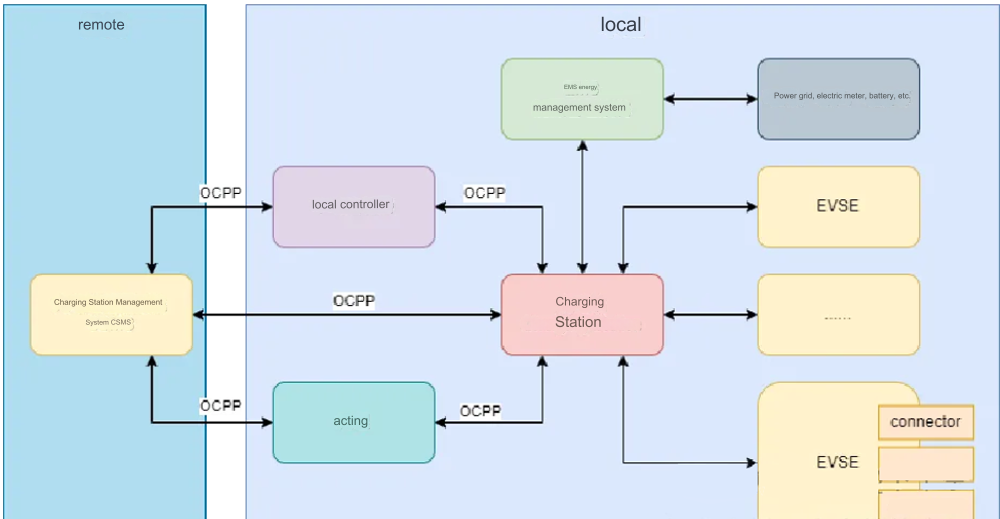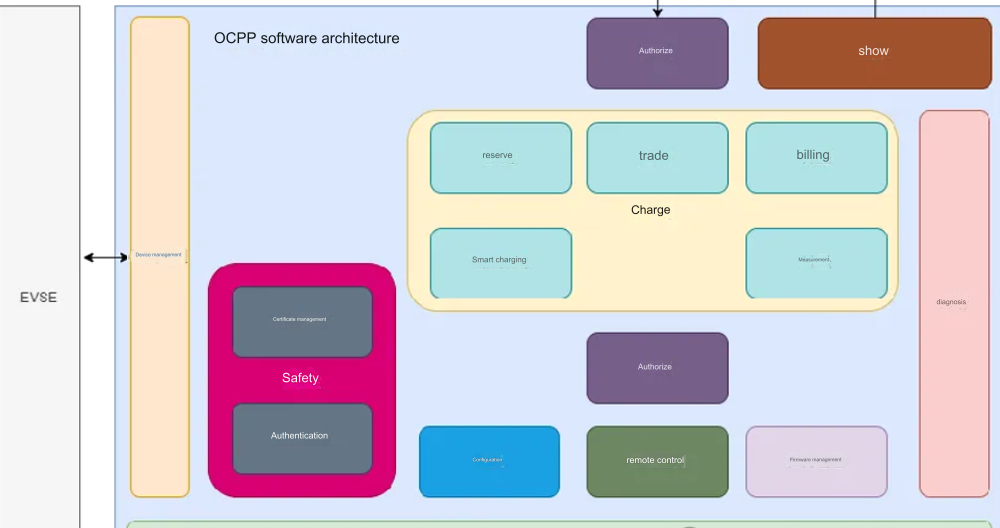The Evolution of OCPP: Bridging Version 1.6 to 2.0.1 and Beyond in EV Charging
Table Of Contents
I.Introduction to the Open Charge Point Protocol
The Open Charge Point Protocol (OCPP) serves as the global standard for communication between Electric Vehicle Supply Equipment (EVSE) and Charging Station Management Systems (CSMS). Authored by the Open Charge Alliance (OCA), this protocol is recognized as the de facto standard in the EV industry (IEC 63110 precursor). It eliminates proprietary lock-ins, ensuring that hardware from different manufacturers can interoperate seamlessly with various backend systems.
Authority Note: This article references the official standards set forth in OCA Whitepapers and IEC/ISO specifications
1、History of OCPP
2. OCPP version introduction
As shown below, from OCPP1.5 to the latest OCPP2.0.1
Because there are too many proprietary protocols in the industry to support a unified service experience and operational interconnection between different operator services, OCA took the lead in developing the open protocol OCPP1.5. SOAP is limited by its own protocol constraints and cannot be widely and rapidly popularized.
OCPP 1.5 communicates with central systems via SOAP protocol based on HTTP protocol to operate charging points It supports the following functions: Local and remotely initiated transactions, including metering of billing
The Leap from 1.6J to 2.0.1
While earlier versions like OCPP 1.5 relied on the cumbersome SOAP protocol, OCPP 1.6J revolutionized the industry by introducing JSON over WebSockets. This allowed for full-duplex communication and significantly reduced data traffic, making it the current market standard. However, the release of OCPP 2.0.1 (fixing the bugs of 2.0) marks a paradigm shift. Unlike 1.6J, OCPP 2.0.1 is not backward compatible due to fundamental changes in its data structure designed to support complex energy management systems (EMS) and rigorous security standards.
Ⅱ.OCPP version introduction
As shown below, from OCPP1.5 to the latest OCPP2.0.1
Because there are too many proprietary protocols in the industry to support a unified service experience and operational interconnection between different operator services, OCA took the lead in developing the open protocol OCPP1.5. SOAP is limited by its own protocol constraints and cannot be widely and rapidly popularized.
OCPP 1.5 communicates with central systems via SOAP protocol based on HTTP protocol to operate charging points It supports the following functions: Local and remotely initiated transactions, including metering of billing
OCPP 1.6J (JSON over WebSockets)
While the older SOAP version is obsolete, OCPP 1.6J remains the most widely deployed version. It utilizes JSON over WebSockets (WSS), which allows for full-duplex communication. Unlike HTTP-based SOAP, WSS enables the server (CSMS) to initiate commands (like RemoteStartTransaction) to the charger even when the charger is behind a NAT firewall.
OCPP 2.0 (JSON)
OCPP 2.0, released in 2018, improves transaction processing, increases security, device management: adds smart charging functionality, for topologies with energy management systems (EMS), local controllers, and for EVs with integrated smart charging, charging stations and charging station management systems. Supports ISO 15118: Plug and Play and Smart Charging requirements for electric vehicles.
OCPP 2.0.1 (JSON)
OCPP 2.0.1 is the latest version, released in 2020. It provides new features and improvements such as support for ISO15118 (Plug and Play), enhanced security and overall improved performance.
OCPP Version Compatibility
OCPP1.x is compatible with lower versions, OCPP1.6 is compatible with OCPP1.5, OCPP1.5 is compatible with OCPP1.2.
OCPP2.0.1 is not compatible with OCPP1.6, OCPP2.0.1 although some of the contents of the OCPP1.6 also have, but the data frame format has been completely different from that sent.
OCPP 2.0.1 protocol
1、Difference between OCPP 2.0.1 and OCPP 1.6
Compared with earlier versions such as OCPP 1.6, OCPP 2.0. 1 has major improvements in the following areas:
a. Improved security
OCPP 2.0.1: The Security & Device Management Overhaul
OCPP 2.0.1 is not backward compatible with 1.6J due to a complete restructuring of the data model. Its most critical improvement is the introduction of three mandatory Security Profiles:
-
Security Profile 1: TLS with Basic Authentication (Password).
-
Security Profile 2: TLS with Client-side Certificates (higher security).
-
Security Profile 3: TLS with Client-side Certificates and Hardware Security Module (HSM) support.
Furthermore, it replaces the limited Heartbeat mechanism with a comprehensive Device Model. This uses a standardized Component and Variable structure to monitor everything from fan speed to internal temperature, vastly improving remote diagnostics.
b.Adding New Features
OCPP2.0.1 adds many new features, including intelligent charging management, and more detailed fault reporting and analysis.
c. More Flexible Design
OCPP2.0.1 has been designed to be more flexible to meet the needs of more complex and diverse applications.
d. Code Simplification
OCPP2.0.1 simplifies the code, making it easier to implement the software.
OCPP2.0.1 firmware update added digital signature, to prevent the firmware download is incomplete, resulting in firmware update failure.
In practical application, OCPP2.0.1 protocol can be used to realize remote control of charging pile, real-time monitoring of charging status, user authentication and other functions, which greatly improves the use of charging equipment, efficiency and safety.OCPP2.0.1 details and functions than the 1.6 version of the many, the development of the difficulty has also increased.
2、OCPP2.0.1 function introduction
OCPP 2.0.1 protocol is the latest version of OCPP protocol. Compared with OCPP 1.6, OCPP 2.0.1 protocol has made a lot of improvements and optimizations. The main contents include:
•Message Delivery: OCP 2.0.1 adds new message types and modifies older message formats to improve efficiency and performance.
•Digital Certificates: In OCPP 2.0.1, digital certificate-based security mechanisms were introduced to provide hardened device authentication and message integrity protection. This is a significant improvement over OCPP1.6 security mechanisms.
•Data Model: OCPP 2.0.1 updates the data model to include support for new device types and features.
•Device Management: OCPP 2.0.1 provides more comprehensive device management functions, including device configuration, troubleshooting, software updates, etc.
•Component models: OCPP 2.0.1 introduces a more flexible component model that can be used to describe more complex charging devices and systems. This helps enable more advanced features such as V2G (Vehicle to Grid).
•Smart charging: Advanced Smart Charging & ISO 15118 Integration,The differentiation between 1.6 and 2.0.1 in smart charging is significant. While 1.6J relies on basic ChargingProfiles, OCPP 2.0.1 natively supports ISO 15118 via a pass-through mechanism.
This enables Plug & Charge (PnC): The EVSE acts as a gateway, allowing the EV to exchange digital certificates directly with the backend for automatic authentication. No RFID cards or apps are required. This also lays the groundwork for V2G (Vehicle-to-Grid), allowing bidirectional energy flow management based on grid frequency and capacity.
•User Identity and Authorization: OCPP2.0.1 provides improved user identification and authorization mechanisms, supports multiple user authentication methods, and puts forward higher requirements for user data protection.
III. Introduction to OCPP function
1. Intelligent charging
External Energy Management System (EMS)
OCPP 2.0.1 addresses this problem by introducing a notification mechanism that notifies CSMS (Charging Station Management System) of external restrictions. Direct smart charging inputs that support energy management systems (EMS) can solve many situations:
Electric vehicles connected to charging points (by ISO 15118)
OCPP 2.0.1 supports ISO 15118 -updated protocol for EVSE-to-EV communication. ISO 15118 standard plug-and-play charging and smart charging (including inputs from EVs) are easier to implement using OCPP 2.0.1. Enable charging station operators to send messages (from CSMS) about charging stations for display to EV drivers.
Smart charging uses:
(1) Load Balancer
Load Balancer is mainly aimed at the internal load of the charging station. The charging station will control the charging power of each charging post according to the pre-configuration. The charging station will be configured with a fixed limit value, such as the maximum output current. In addition, the configuration also includes optional options for optimizing the power distribution of charging stations to individual charging stations. This configuration tells the charging station that charging rates below this configuration value are invalid and that other charging strategies should be selected.
(2) Central intelligent charging
Central smart charging assumes that charging limits are controlled by a central system, which calculates part or all of the charging schedule after receiving the grid operator’s prediction information about the grid capacity, and the central system will impose charging limits on charging stations and set charging limits by responding to messages.
(3) Local intelligent charging
Local intelligent charging is realized by a local controller, which is equivalent to an agent of the OCPP protocol, responsible for receiving messages from the central system and controlling the charging behavior of other charging stations in the group. The controller itself can be equipped with charging stations or not. In the mode of local intelligent charging, the local controller limits the charging power of the charging station. During charging, the limit value can be modified. The limit value of the charging group can be configured locally or by the central system.
2. System Introduction
systematic framework
Software architecture
The functional modules in OCPP2.0.1 protocol mainly include Data Transfer module, Authorization module, Security module, Transactions module, Meter Values module, Cost module, Reservation module, Smart Charging module, Diagnostics module, Firmware Management module and Display Message module
IV. Future development of OCPP
1.Advantages of OCPP
OCPP is a free and open protocol, and is also an effective way to solve the current charging pile interconnection, and has been popularized and used in many countries around the world, the future interconnection between the operator’s services will have a language to communicate.
Before the advent of OCPP, each charging post manufacturer developed its own proprietary protocol for back-end connectivity, thus locking charging post operators to a single charging post manufacturer. Now, with virtually all hardware manufacturers supporting OCPP, charging post operators are free to choose hardware from any vendor, making the market more competitive.
The same is true for property/business owners; when they purchase a non-OCPP charging station or contract with a non-OCPP CPO, they are locked into a specific charging station and charging post operator. But with OCPP-compliant charging hardware, homeowners can remain independent of their providers. Owners are free to choose a more competitive, better priced, or better functioning CPO. also, they can expand their network by mixing different charging post hardware without having to dismantle existing installations.
Of course, the main benefit of EVs is that EV drivers do not need to rely on a single charging post operator or EV supplier. As with purchased OCPP charging stations, EV drivers can switch to better CPOs/EMPs. a second, but very important benefit is the ability to use e-mobility roaming.
2.OCPP in the role of electric vehicle charging
(1) OCPP helps EVSE and CSMS communicate with each other
(2) Authorization of electric vehicle users to start charging
(3) Remote modification of charging configuration, remote charging control (start/stop), remote unlocking gun (connector id)
(4) Real-time status of charging station (available, stopped, suspended, unauthorized EV/EVSE), real-time charging data, real-time power consumption, real-time EVSE failure
(5) Smart charging (reducing grid load)
(6) Firmware Management (OTAA)

Ⅴ.Empirical Validation & Manufacturer Insights
Implementing OCPP 2.0.1 requires rigorous validation. At Linkpower, our R&D team has conducted extensive interoperability testing using the OCTT (Open Charge Point Protocol Compliance Testing Tool) alongside real-world integrations.
Test Environment & Results: We have successfully validated our EVSE firmware against 100+ global CSMS providers (including major European and US networks). Our tests focus on:
-
TLS Handshake Stability: Ensuring connection persistence under Security Profile 2 & 3.
-
Transaction Data Integrity: Verifying the new
TransactionEventmessage delivery under unstable network conditions (Packet loss simulation).
This empirical data confirms that our OCPP 2.0.1 solution is not just theoretically compliant, but field-ready for V2G commercial deployment.
Post time: Oct-21-2024








